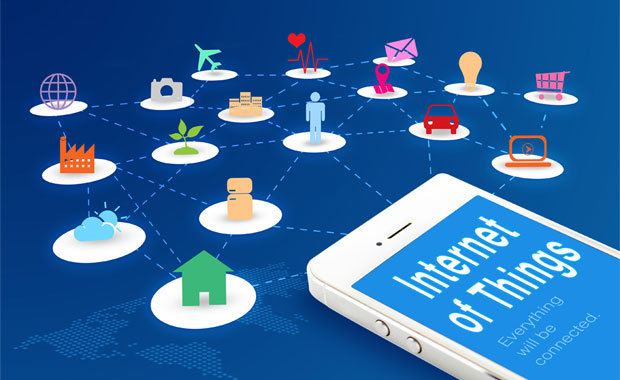While the general public’s fascination with technology largely has been focused on the latest connected products unveiled at the recent CES conference in Las Vegas, many companies are trying to figure out where the real business opportunities lie in the long-awaited rise of the Internet of Things.
One of the early proponents of IoT’s unprecedented potential was Salesforce.com, which promoted its own view of the concept in the form of the “Internet of the Customer,” or IoC.
Behind every “thing” being connected is a customer who is affected by the thing’s behavior and its ability to meet the customer’s expectations, Salesforce suggested. Therefore, correlating the thing’s availability and utilization was essential to ensure customer satisfaction and success.
Over the past three years, Salesforce has argued that creating connected products and services also can improve the customer experience, tighten the level of customer engagement, and create new business opportunities for the company.
If executed properly, an IoT/IoC strategy not only can fend off competitive disruption, but also open up new market opportunities that can lead to a major business transformation, in Salesforce’s view.
Unfortunately, this kind of aspirational thinking has inspired just a small number of companies to pursue IoT opportunities aggressively. The overwhelming majority of organizations have remained confused about what the opportunities mean to them, and have harbored concerns about their vendors’ ability to deliver on their IoT promises.
Finding the Right Mix
Since launching its IoC campaign and creating its IoT Cloud, Salesforce has been searching for the right formula to overcome those concerns and meet the needs of its customers.
Part of the challenge has been the diverse set of potential IoT use cases across the various industries Salesforce and its partners serve. Another issue has been how to capture and correlate the data from an infinite assortment of connected products and services to the customers affected.
An IoT solution entails a series of piece-parts from various vendors — starting with remote sensors and extending across numerous hardware, software and network components. Bringing all the pieces together requires a systems integrator with a sophisticated understanding of the technical challenges and business implications.
Although IoT can generate valuable data to power more personalized marketing campaigns and effective sales efforts, Salesforce has discovered that improving the quality of service appears to be the most compelling and immediate reason for many organizations to pursue an IoT strategy.
In response, Salesforce has focused its software skills on customer service-oriented use cases and has relied on its partner ecosystem to supply the other elements of the customer service IoT value chain.
Making the Leap
Salesforce’s Thunder platform is designed to handle high volume, real-time event processing using a rules-based orchestration engine that quickly analyzes and responds to alerts, so organizations can respond more effectively when problems arise and anticipate others before they occur. The company’s ultimate goal is to put this information into context and improve the overall quality of customer service.
Improving customer service may seem like an obvious reason to pursue an IoT strategy, but Salesforce has found that many organizations are unsure if it is right for them or how they should proceed. Such organizations may lack executive leadership, or their leaders may not know how to bring various corporate stakeholders together.
To overcome those obstacles, Salesforce launched a series of strategic workshop programs aimed at helping existing and potential customers create and test new IoT ideas. The Ignite sessions include a multidisciplinary Salesforce team that helps the customer’s leadership team envision new opportunities, and responds to concerns about data integration, security, privacy and other issues.
Salesforce’s strategy sessions have become an effective tool to jumpstart IoT pilot programs that can lead to more strategic initiatives. They not only have helped Salesforce remove many of the barriers that have stood in the way of getting more traction for its IoT Cloud offerings, but also have opened the door for Salesforce’s partners to win more IoT deals.
It is this type of “handholding” program, combined with new forms of partner collaboration and the rapid advancement of IoT platforms like Thunder, that will lead to exponential growth of the IoT market in 2017.













































Social Media
See all Social Media